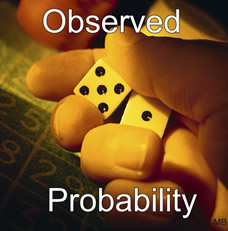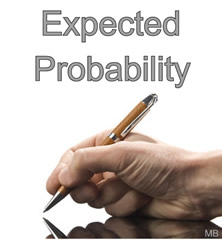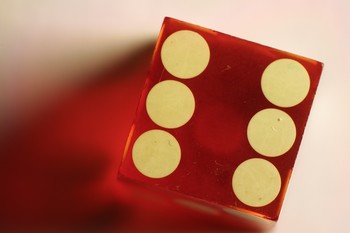We have seen references to the term "theoretical probability" in previous lessons. We are now going to investigate "experimental probability"
According to this experiment, the probability is 13/45. Another experiment with a different group of students will most likely give a different probability of the popularity of Brand D sneakers.
The value 13/45 is called the experimental probability.
The Law of Large Numbers (called Bernoulli's Theorem) states:
Topical Outline | JrMath Outline | MathBitsNotebook.com | MathBits' Teacher Resources
|
||||||||||||||||||||||||||||||||||||||||||






